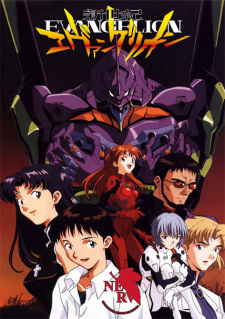
Shinseiki Evangelion
Summary: Fifteen years after a cataclysmic event known as the Second Impact, the world faces a new threat: monstrous celestial beings called Angels invade Tokyo-3 one by one. Mankind is unable to defend themselves against the Angels despite utilizing their most advanced munitions and military tactics. The only hope for human salvation rests in the hands of NERV, a mysterious organization led by the cold Gendou Ikari. NERV operates giant humanoid robots dubbed "Evangelions" to combat the Angels with state-of-the-art advanced weaponry and protective barriers known as Absolute Terror Fields.
Years after being abandoned by his father, Shinji Ikari, Gendou's 14-year-old son, returns to Tokyo-3. Shinji undergoes a perpetual internal battle against the deeply buried trauma caused by the loss of his mother and the emotional neglect he suffered at the hands of his father. Terrified to open himself up to another, Shinji's life is forever changed upon meeting 29-year-old Misato Katsuragi, a high-ranking NERV officer who shows him a free-spirited maternal kindness he has never experienced.
A devastating Angel attack forces Shinji into action as Gendou reveals his true motive for inviting his son back to Tokyo-3: Shinji is the only child capable of efficiently piloting Evangelion Unit-01, a new robot that synchronizes with his biometrics. Despite the brutal psychological trauma brought about by piloting an Evangelion, Shinji defends Tokyo-3 against the angelic threat, oblivious to his father's dark machinations.
[Written by MAL Rewrite]
Description
Fifteen years after a cataclysmic event known as the Second Impact, the world faces a new threat: monstrous celestial beings called Angels invade Tokyo-3 one by one. Mankind is unable to defend themselves against the Angels despite utilizing their most advanced munitions and military tactics. The only hope for human salvation rests in the hands of NERV, a mysterious organization led by the cold Gendou Ikari. NERV operates giant humanoid robots dubbed "Evangelions" to combat the Angels with state-of-the-art advanced weaponry and protective barriers known as Absolute Terror Fields.
Years after being abandoned by his father, Shinji Ikari, Gendou's 14-year-old son, returns to Tokyo-3. Shinji undergoes a perpetual internal battle against the deeply buried trauma caused by the loss of his mother and the emotional neglect he suffered at the hands of his father. Terrified to open himself up to another, Shinji's life is forever changed upon meeting 29-year-old Misato Katsuragi, a high-ranking NERV officer who shows him a free-spirited maternal kindness he has never experienced.
A devastating Angel attack forces Shinji into action as Gendou reveals his true motive for inviting his son back to Tokyo-3: Shinji is the only child capable of efficiently piloting Evangelion Unit-01, a new robot that synchronizes with his biometrics. Despite the brutal psychological trauma brought about by piloting an Evangelion, Shinji defends Tokyo-3 against the angelic threat, oblivious to his father's dark machinations.
[Written by MAL Rewrite]
Available At
Warning: Array to string conversion in /home/hianime.me.uk/public_html/anime.php on line 243
Array
Shinseiki Evangelion Pictures
Shinseiki Evangelion Review
Shinseiki Evangelion — Fifteen years after a cataclysmic event known as the Second Impact, the world faces a new threat: monstrous celestial beings called Angels invade Tokyo-3 one by one. This overview is intentionally spoiler-free and focuses on tone and intent rather than plot specifics.
Thematically, It sits firmly within Action, Avant Garde, Award Winning, Drama, Sci-Fi, Suspense conventions as a TV work and has garnered attention (MAL score: 8.36). This work explores character dynamics, tonal shifts, and the interplay between narrative ambition and execution. The story's pacing and tonal choices are crafted to complement the central ideas, often emphasizing atmosphere and emotional truth over explicit exposition. The show's ability to evoke a consistent mood — whether melancholic, exuberant, or contemplative — is a recurring strength, and the scenes are constructed so viewers can infer stakes without needing explicit spoilers.
Characterization is a core pillar here. Protagonists and supporting figures are written with distinct motivations and narrative roles; even when archetypal, the series invests in small behavioral details that make choices feel earned. Character arcs are handled with an eye for gradualism: development often arrives through incremental beats rather than abrupt, expository shifts. The interactions between characters create texture, and relationships are used to illuminate both personal flaws and larger thematic concerns.
On the visual front, production values play a significant role. The animation quality varies by sequence but frequently showcases thoughtful direction and composition. Background art, framing, and color palettes are used deliberately to support tone — quieter scenes favor muted palettes while action or heightened emotional beats employ brighter, more kinetic visuals. Direction choices, such as camera movement and shot selection, often elevate scenes beyond their raw script, creating moments that linger in the viewer's mind.
The soundscape — score, incidental music, and sound design — complements the visual language. Music cues are placed to maximize emotional resonance without manipulating the audience with melodrama; this restraint often leads to more authentic emotional payoff. Sound design punctuates key moments, and when the series leans on silence, those quieter moments are given weight by measured audio choices.
Pacing and structure are handled with craft. Episodes are arranged to build tension and release methodically, and the narrative rarely rushes through important emotional beats. That said, the deliberate pacing may feel slow to viewers who prefer faster plot turnover; the reward is greater nuance and an accumulation of meaning across the series. Accessibility is generally good — one can appreciate surface-level pleasures, while repeat or attentive viewing reveals additional layers.
No title is without flaws. Occasional unevenness in subplots or variable animation across episodes can be distracting. Some tonal shifts might feel abrupt if you expect uniformity; others will argue that those shifts are purposeful. These are worth noting, but they seldom undercut the larger achievements of the work.
In sum, Shinseiki Evangelion offers a rich experience for viewers who value character-driven storytelling, considered visual design, and a soundtrack that supports rather than overwhelms. For fans of Action, Avant Garde, Award Winning, Drama, Sci-Fi, Suspense, this is an especially rewarding watch. It's recommended for those who appreciate layered narratives and artistry in animation, and best approached with patience and attention to nuance.
Characters & Voice Actors
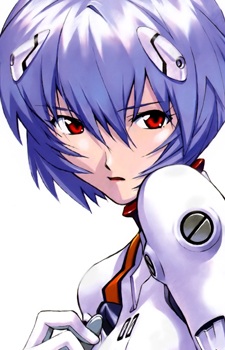
Ayanami, Rei
Main

Ayanami, Rei
Main

Ayanami, Rei
Main

Ayanami, Rei
Main

Ayanami, Rei
Main

Ayanami, Rei
Main

Ayanami, Rei
Main

Ayanami, Rei
Main

Ayanami, Rei
Main

Ayanami, Rei
Main

Ayanami, Rei
Main

Ayanami, Rei
Main

Ayanami, Rei
Main

Ayanami, Rei
Main

Ayanami, Rei
Main
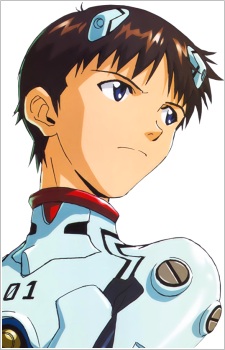
Ikari, Shinji
Main

Ikari, Shinji
Main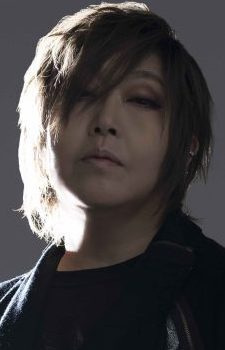

Ikari, Shinji
Main

Ikari, Shinji
Main

Ikari, Shinji
Main
Staff

Anno, Hideaki
Producer, Director, Script, Storyboard, Key Animation, Original Creator, Mechanical Design

Kobayashi, Noriko
Producer

Sugiyama, Yutaka
Producer

Uchiyama, Shuuji
Producer

Ueda, Motoki
Producer

Yamaga, Hiroyuki
Producer

Takahashi, Tomoko
Assistant Producer

Tanaka, Hideyuki
Sound Director

Andou, Ken
Episode Director

Hanyuu, Naoyasu
Episode Director

Ishidou, Hiroyuki
Episode Director, Storyboard

Kaga, Tsuyoshi
Episode Director, Storyboard

Masayuki
Episode Director, Storyboard, Assistant Director, Layout, Key Animation, Animation Director, Setting

Masuo, Shouichi
Episode Director, Key Animation
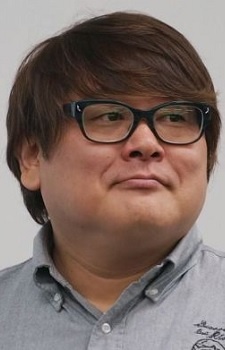
Mizushima, Seiji
Episode Director

Okamura, Tensai
Episode Director, Storyboard, Key Animation

Oohara, Minoru
Episode Director

Ootsuka, Masahiko
Episode Director

Sugiyama, Keiichi
Episode Director, Storyboard

Takamura, Akira
Episode Director